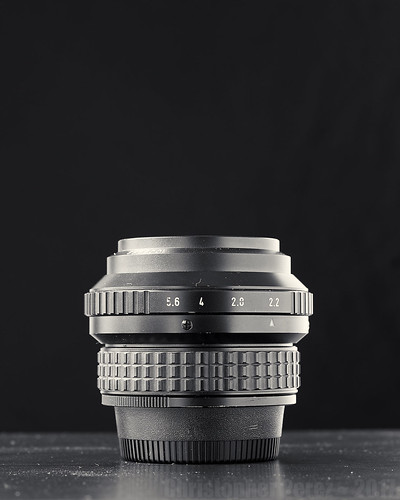
When I saw this lens come up on eBay recently I needed to ask the seller a question. I wanted to confirm that this Pentax lens came in the Nikon F mount as it was listed. Pentax lenses come either in m42 thread mount or K bayonet. I've never seen one with the Nikon mount before.
The Buy It Now price was less than they typically sell for (typically north of 200Euro) and the lens had failed to sell after several listing cycles. While not exactly super cheap, it seemed somewhat reasonable to me so I picked it up for the BIN price.
I knew that if it really was a Nikon F-mount adapted lens that it would work on my Sony APS-C mirrorless cameras using a Lens Turbo II focal reducer and that it could be fun to work in a very different imaging mode.
The "look" of this optic is unlike anything I've ever used. Certainly it shares the soft focus effects of a class of lenses that have come in and out of vogue over the years. But it is strikingly different in one key area.
While not exactly well practiced in the arts of using soft focus lenses, I'm not unfamiliar with the concept, either. In the past I've owned several soft focus lenses for large and medium format film cameras. These included a 180mm Fuji "soft", both the 250mm and 180mm Rodenstock "soft" (with strainer disks), a Portland Portrait single element lens (I wish I still had this one) that covered 8x10inch film, a Wollensak Verito (which I also wish I still owned), and the surprisingly beautiful 150mm Mamiya SF (with strainer disks).
Nearly the very first thing I noticed with the Pentax 85mm f/2.2 SMC Soft is that there is significant depth of field carried _behind_ the point of focus. Indeed, a critical point of focus does indeed exist, but the out of focus rendering does not drop off anywhere near as quickly as other lenses. It's a rather strange effect and one that takes some getting used to.
I asked folks on a couple lens discussion forums how the phenomenon is possible. Alas, no one seems to know, though a couple people say they've observed the same effect.
Playing around a bit with where I focus the lens and where I set the aperture (which determines to some extent the amount of spherical aberration is put to the sensor) I think I've stumbled on a rather nice solution. I've found that if I focus well in front of the subject the scene can be rendered beautifully and the background drops into a pretty haze of soft blur. [example1, example2, example3, example4]
Several projects come to mind where this lens might be just the tool to be applied. I love the way it takes shapes and light and shadow and makes them look like a painting.
No comments:
Post a Comment